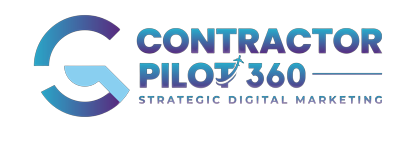In the world of digital marketing, numbers are more than just figures. They hold valuable insights that can shape the success of your business. Two critical metrics that deserve your attention are lead conversion rate and ad conversion. These numbers provide a deeper understanding of your marketing efforts and can guide your decision-making process. In this blog, we will explore why knowing your lead conversion rate and ad conversion is crucial and how they can impact your business.
Lead conversion rate and ad conversion are essential for evaluating the effectiveness of your marketing campaigns. By tracking these metrics, you can determine how well your ads are performing and how successful you are at turning leads into customers. These numbers help you identify which strategies and channels are delivering the best results, allowing you to allocate resources more efficiently.
Knowing your lead conversion rate and ad conversion allows you to optimize your marketing campaigns. By analyzing the data, you can identify areas for improvement and make informed decisions to increase conversion rates. For instance, if your ad conversion rate is low, you can refine your targeting, messaging, or landing page design to better resonate with your audience and boost conversions.
Calculating ROI:
Understanding your lead conversion rate and ad conversion helps you calculate the return on investment (ROI) of your marketing efforts. By knowing how many leads converted into paying customers, you can attribute revenue to specific campaigns or channels. This knowledge enables you to make data-driven decisions when allocating your marketing budget, focusing on initiatives that yield the highest ROI.
Enhancing Customer Journey:
Lead conversion rate and ad conversion are tied to the customer journey. Analyzing these metrics can highlight gaps or bottlenecks in your sales funnel. By identifying where leads are dropping off or not converting, you can optimize the customer journey, remove barriers, and provide a more seamless experience. This can lead to increased conversions and improved customer satisfaction.
Setting Realistic Goals:
Understanding your lead conversion rate and ad conversion allows you to set realistic goals for your marketing efforts. These metrics provide a benchmark to measure your progress and track the effectiveness of your strategies over time. By continuously monitoring and improving these numbers, you can set achievable targets and strive for consistent growth.
In the dynamic world of digital marketing, data is king. Lead conversion rate and ad conversion are not just numbers; they are invaluable indicators of your marketing success. By knowing these metrics, you can evaluate your marketing effectiveness, optimize campaigns, calculate ROI, enhance the customer journey, and set realistic goals. So, don't overlook the numbers—embrace them, analyze them, and let them guide your path to marketing success. Remember, in the realm of digital marketing, the numbers do matter.
Calculating your lead conversion rate
Lead conversion rate = (Number of leads that convert to customers ÷ Total number of leads) x 100
For example, if you generated 100 leads and 20 of those leads became customers, then your lead conversion rate would be:
Lead conversion rate = (20 ÷ 100) x 100 = 20%
So in this example, 20% of the leads that you generated converted to paying customers. The lead conversion rate can be a useful metric for evaluating the effectiveness of your lead generation and sales processes.
Calculating Ad and Sales Conversion Rate
Ad conversion rate = (Number of people who clicked on the ad ÷ Number of people who saw the ad) x 100
For example, if 1,000 people saw your ad and 50 people clicked on it, then your ad conversion rate would be:
Ad conversion rate = (50 ÷ 1,000) x 100 = 5%
Sale conversion rate = (Number of people who purchased the product ÷ Number of people who clicked on the ad) x 100
For example, if 50 people clicked on your ad and 10 people made a purchase, then your sale conversion rate would be:
Sale conversion rate = (10 ÷ 50) x 100 = 20%
A.Optimizing Marketing Campaigns:
Evaluating Marketing Effectiveness:

The Numbers Do Matter: Understanding the Importance of Lead Conversion Rate and Ad Conversion
Contractor Pilot 360 | Content Writer
